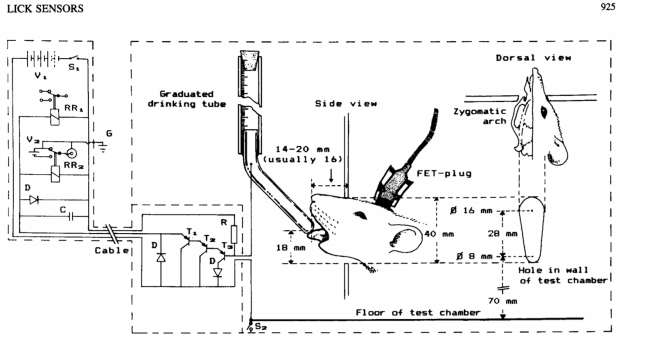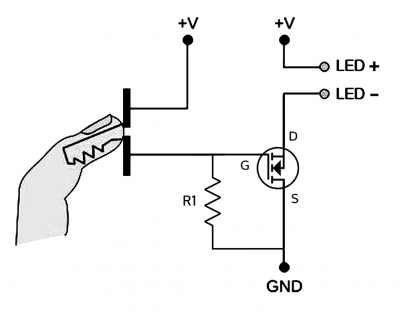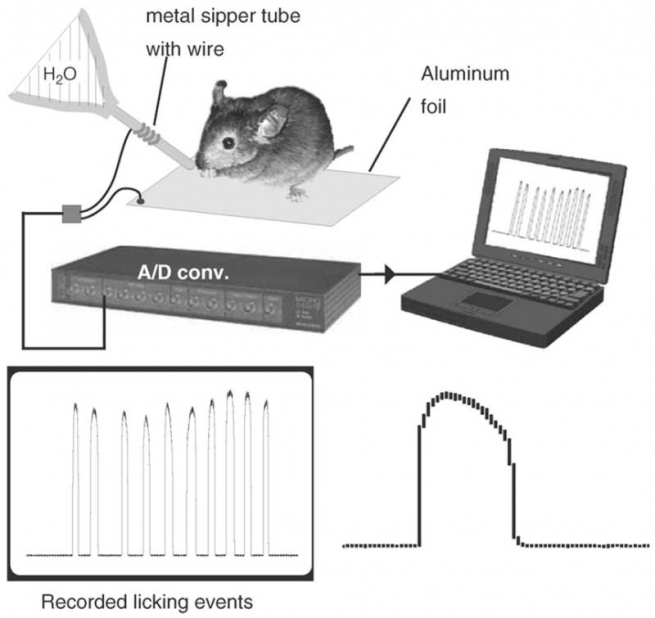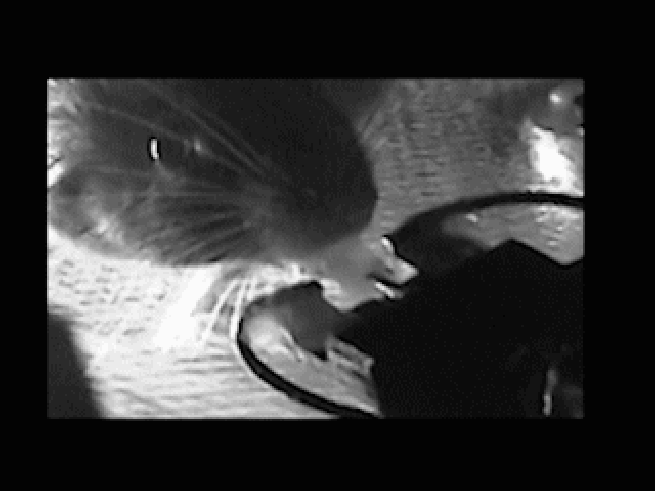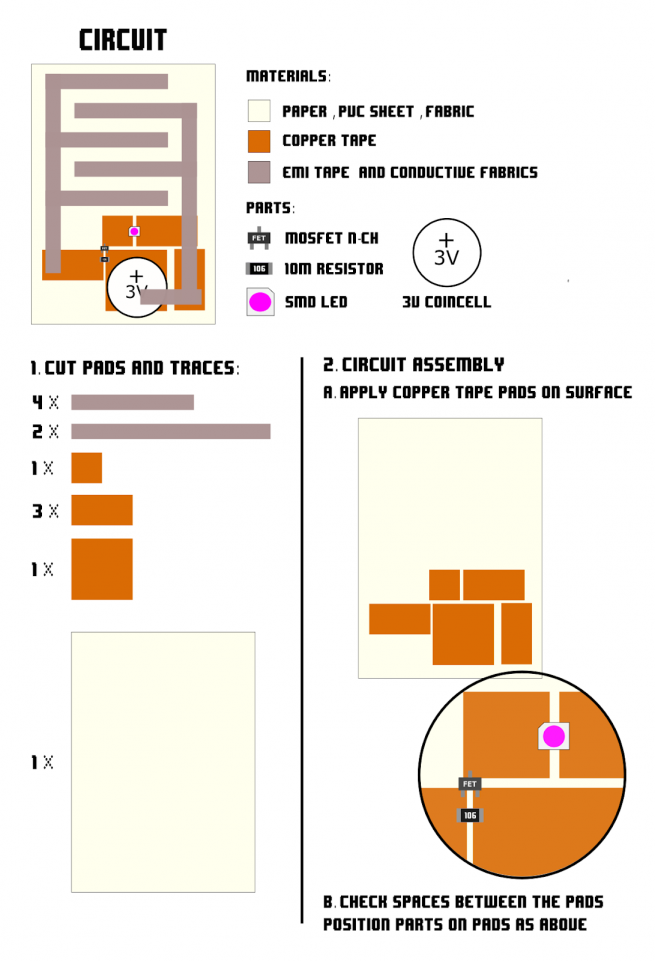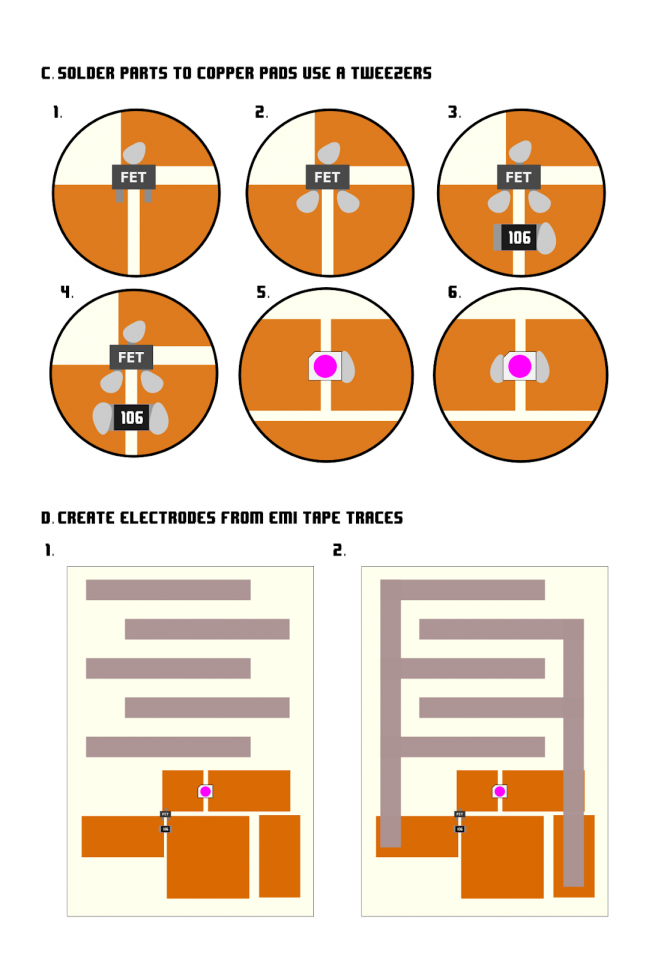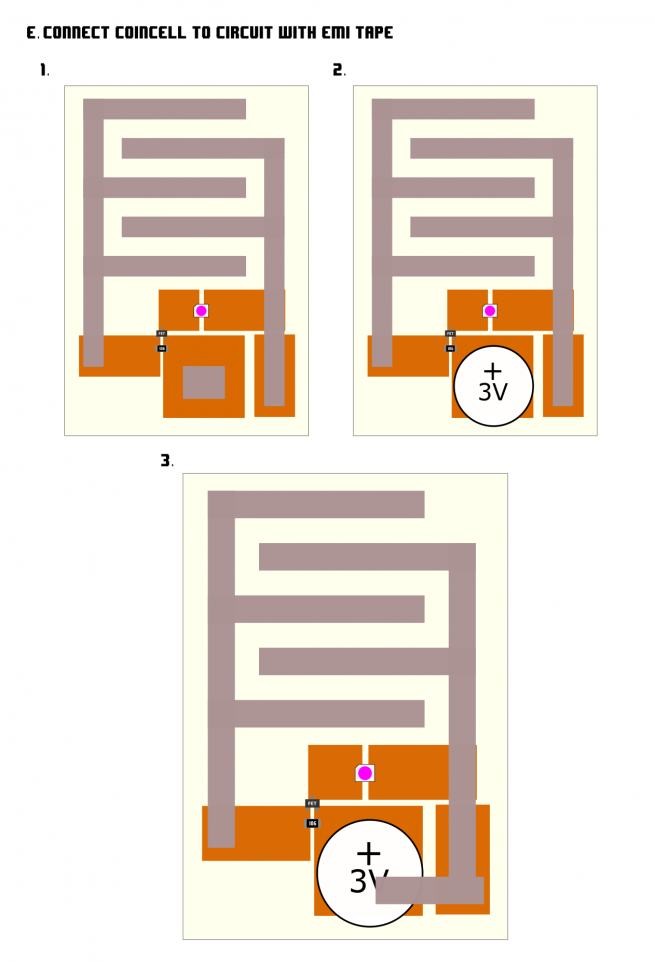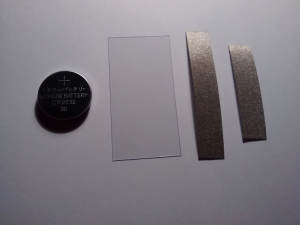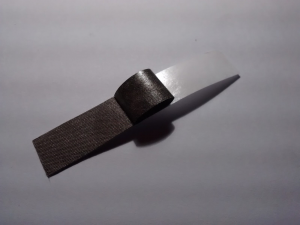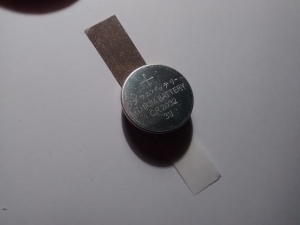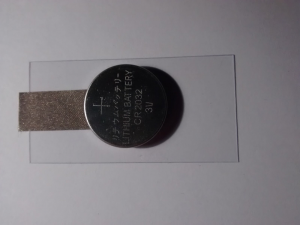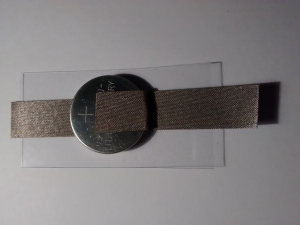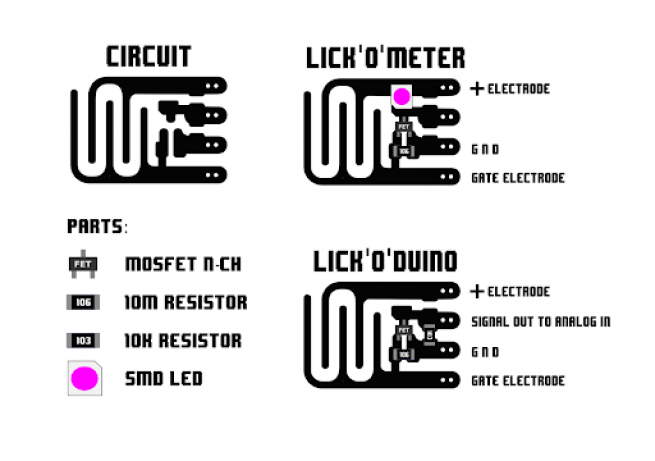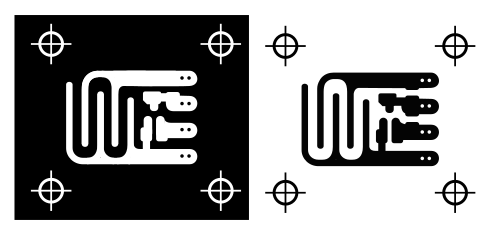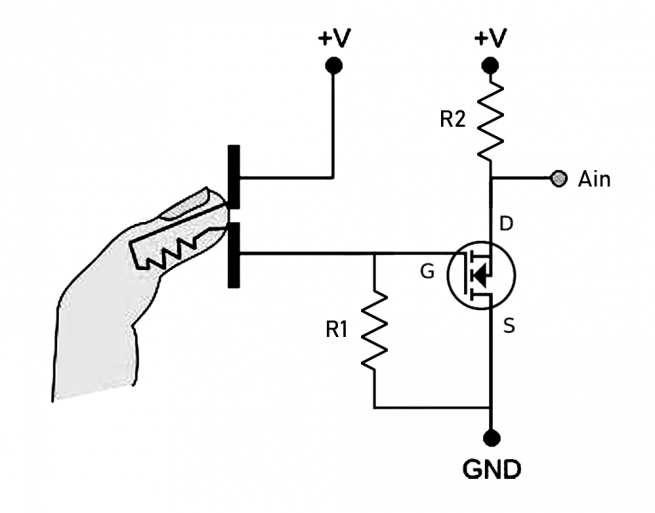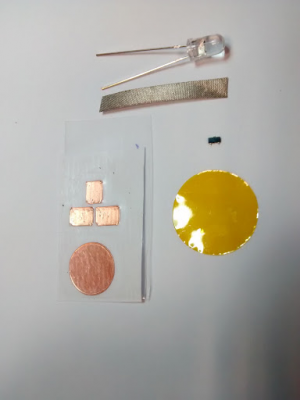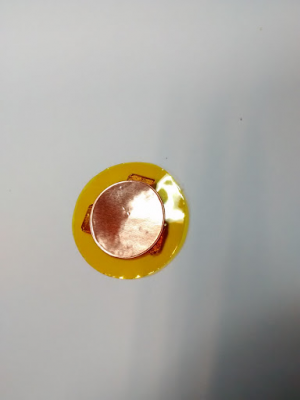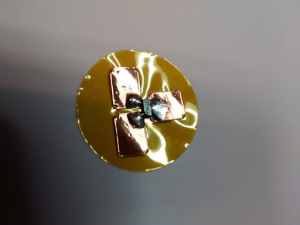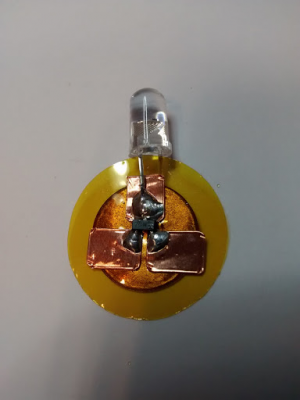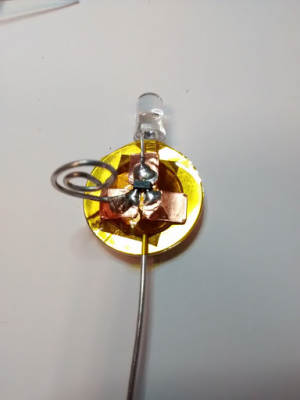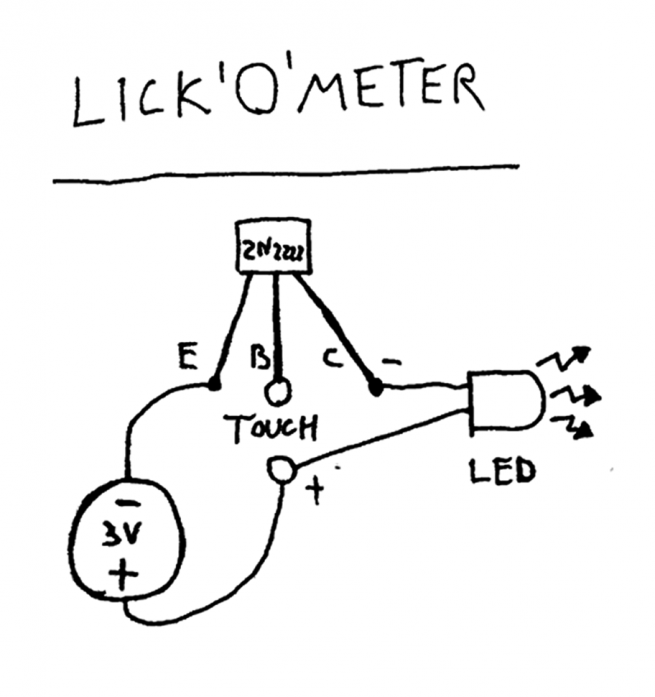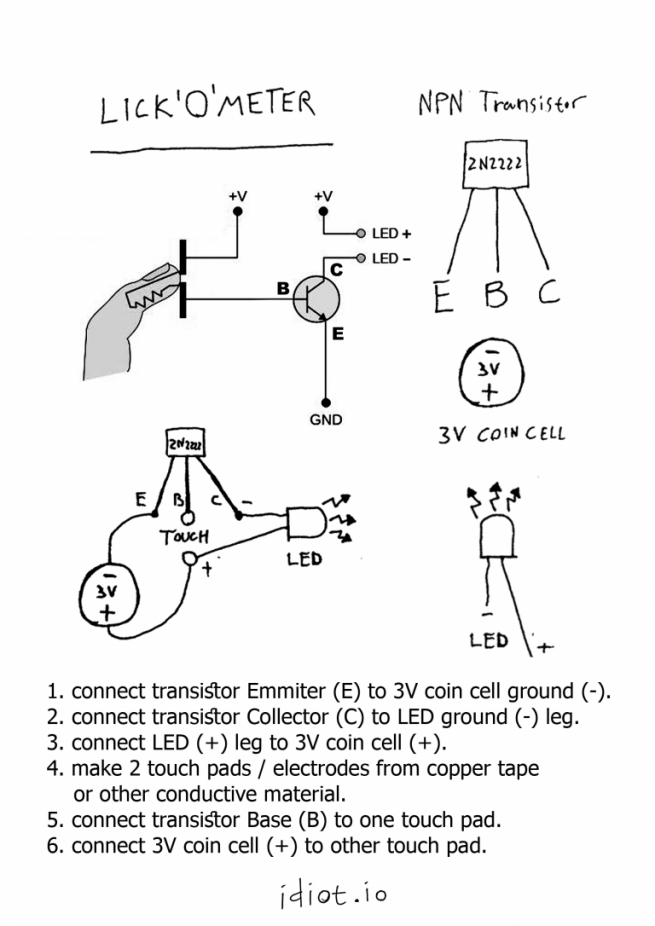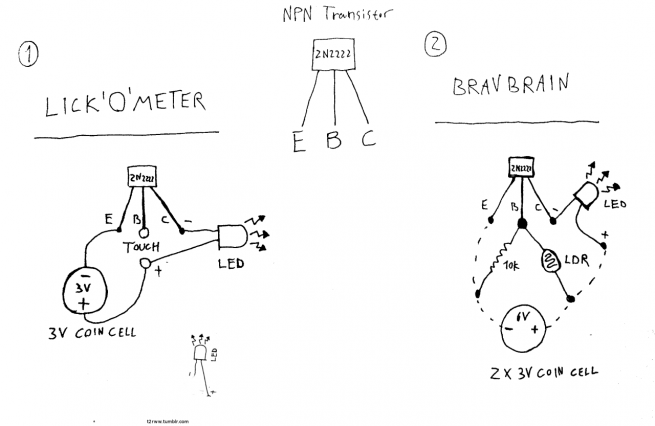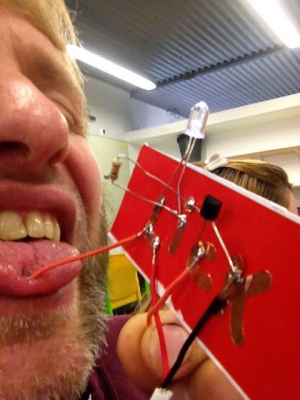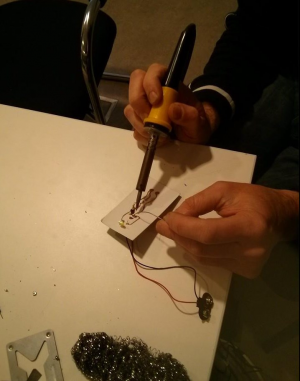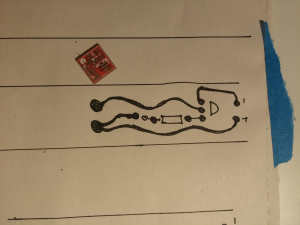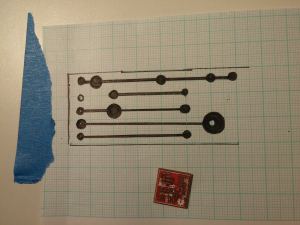Lick’O’Meter is a basic type of Resistive Touch switch in its simplest form . The operation is simple, A Mosfet transistor is used as a switch. [R1] 10Mohm Resistor voltage divider used for high sensitivity and also keeps the Gate to ground when no electrode is touched, so it does not float. If one of the electrodes is touched, nothing will happen. But if both of the electrodes are touched together, a small amount of current will flow From +V electrode through Our skin (Sweat, Blood, Water or other Conductive Material) to the gate of the transistor. The transistor will then go from cut-off to saturation mode, the D S region of the transistor will form a connection and current will flow through the LED.
There are numerous different ways to implement a resistance touch switch, with transistors, with 555, with 741, with CMOS and many more. The idea is always the same: Two electrodes are used as the touch plates. Current flow from the human skin from one electrode to the other, which finally stimulates an amplifier or other current sensitive component.
Abstract
Licking behavior in rodents is widely used to determine fluid consumption in various behavioral contexts and is a typical example of rhythmic movement controlled by internal pattern-generating mechanisms. The measurement of licking behavior by commercially available instruments is based on either tongue protrusion interrupting a light beam or on an electrical signal generated by the tongue touching a metal spout.
Workshop
Circuit#1 - Paper , Conductive Tapes & Fabrics Lick’O’Meter Circuit
3V Coin Cell Holder from EMI Tape
Circuit#2 - Etching a Lick’O’Meter Circuit - Copper Tape, Conductive Fabrics, Pyralux
Photo Masks:
Lithography process with photosensitive dry film & Etching:
Check Flexible Sticky PCB Fabrication Tutorial Link
Preparing DIY Flexible copper tape clad - Step 1
Applying PhotoSensitive Dry Film on Flexible Copper Clad - Step 2 Or follow the steps in this Link
Developing Process with Sodium Carbonate - Step 4


